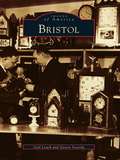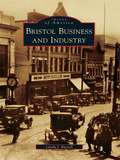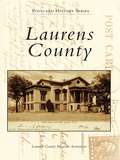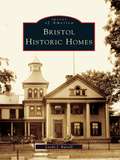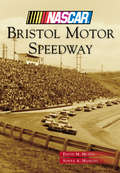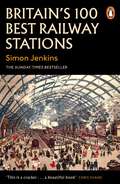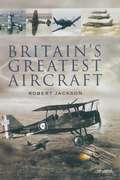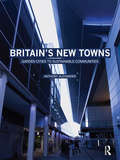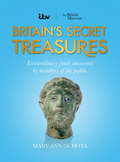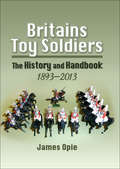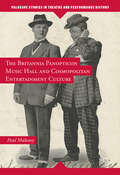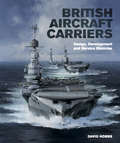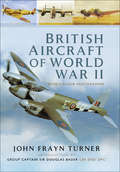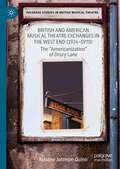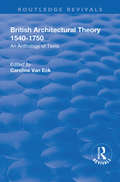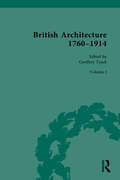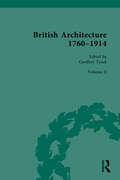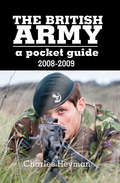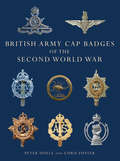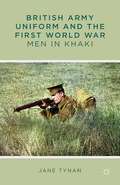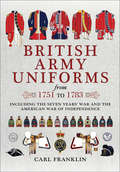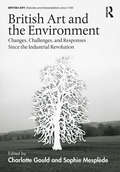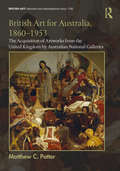- Table View
- List View
Bristol
by Steven Vastola Gail LeachBristol was originally a tightly held and uninhabited portion of Farmington and was known in its early days as the West Woods. Settlers did not arrive until the 1720s and, after building their small community, they sought and received status as the New Cambridge Parish in 1742. Their numbers continued to grow and, by 1785, the community joined neighboring West Britain Parish in separating from Farmington and becoming the town of Bristol. Bristol tells the story of the people, places, and events that transformed this small agricultural hamlet into a true industrial city. The waters of the Pequabuck River brought industry, which soon surpassed farming as the residents' primary livelihood. Bristol became the source of many important products-clocks, springs, silverware, coaster brakes, doorbells, automobiles, roller bearings, and fishing rods, to name a few. In following this evolution, Bristol highlights the residents and workers, their homes and places of business, their entertainment and modes of transportation.
Bristol Business and Industry
by Lynda J. RussellBristol was incorporated in 1785 and quickly became recognized as a clock-manufacturing center and home of the E. Ingraham Company's "dollar watch." The town grew with the many immigrant workers who arrived to work for local knitting mills, spring companies, and brass manufacturers. By the 1890s, the strong growth of the town brought an influx of people with different skills who established the Bristol Press, banks, local neighborhood shops and markets, and service industries. In 1920, Bristol Nurseries created new varieties of chrysanthemums that eventually made Bristol known as the "Mum City." Redevelopment in the 1960s brought the new Bristol Plaza and changes on Farmington Avenue. In 1979, ESPN started its first broadcast in its new home on Middle Street. With the completion of the new Route 72, Bristol will today continue to offer new opportunities for business and industry to grow.
Bristol Dragway (Images of Sports)
by David M. Mcgee Kenny BernsteinBristol Dragway was carved into an East Tennesseemountainside in 1965. In the more than four decadessince, the track known as "Thunder Valley" has carved its niche as a world-class facility in professional drag racing. Located adjacent to Bristol Motor Speedway, the dragway's well-earned nickname stems from the unique acoustic experience fans get when the power of unlimited racing engines echoes off the nearby hillsides. Bristol Dragway retraces the track's early history, its role in shaping the sport, and its return to prominence after an $18 million renovation in the late 1990s. The book features images of drag racing's greatest stars and chronicles decades of the sport's most memorable moments.
Bristol Historic Homes
by Lynda J. RussellBristol, originally known as West Woods, formed later than other Colonial towns. Bristol's mother town of Farmington was settled in 1640 and became a town in 1645, but pioneers did not lay out the remote and unpopulated section of Farmington until 1721. The Jerome, Matthews, and Lewis families created the New Cambridge Parish in 1742, and it was this parish that separated from Farmington and finally formed the town of Bristol in 1785. In Bristol Historic Homes, readers will meet these families and other important figures, such as Ebenezer Barns. Barns built the first permanent home in 1728, and this structure later became a tavern and community center. Through wonderfully preserved vintage photographs, this volume shows how an agricultural community grew and prospered as a variety of skilled tradesmen brought hard work and vision to this beautiful area.
Bristol Motor Speedway
by David M. Mcgee Sonya HaskinsWhen Bristol's race track opened in 1961, tickets were often given away to fill the 18,000 seats. Over the years, Bristol Motor Speedway has grown to 160,000 seats and legendary status among race fans. There is a fascination with the unforgettable moments that take place at the track, including rivalries that are hard to miss when fans can watch all the action around the half-mile track no matter where they are seated.
Britain's 100 Best Railway Stations
by Simon JenkinsDiscover the architectural gems that are Britain's 100 Best Railway Stations in this Sunday Times top 10 bestseller'This is a cracker . . . a beautiful book' Chris EvansIt is the scene for our hopeful beginnings and our intended ends, and the timeless experiences of coming and going, meeting, greeting and parting. It is an institution with its own rituals and priests, and a long-neglected aspect of Britain's architecture. And yet so little do we look at the railway station.Simon Jenkins has travelled the length and breadth of Great Britain, from Waterloo to Wemyss Bay, Betws-y-Coed to Beverley, to select his hundred best railway stations. Blending his usual insight and authority with his personal reflections and experiences - including his founding the Railway Heritage Trust - the foremost expert on our national heritage deftly reveals the history, geography, design and significance of each of these glories. Beautifully illustrated with colour photographs throughout, this joyous exploration of our social history shows the station's role in the national imagination; champions the engineers, architects and rival companies that made them possible; and tells the story behind the triumphs and follies of these very British creations. These are the marvellous, often undersung places that link our nation, celebrated like never before.'However spectacular the book's photographs, it's the author's prowess as a phrase-maker that keeps you turning the pages' The Times'An uplifting exploration of our social history' Guardian
Britain's Greatest Aircraft
by Robert JacksonDuring the last century the British aircraft industry created and produced many outstanding aeroplanes. These aircraft were world leaders in advanced technology, utilizing inventions by British engineers and scientists such as radar, the jet engine, the ejector seat and vertical take-off and landing. This book describes the design-history, development and operational careers of twenty-two legendary military and civil aeroplanes. Each one has played a significant part in aviation history.Sopwith Camel, SE.5, Bristol F2B Fighter and the Airco DH4 were all great successes in the relatively early days of flight. In the thirties the Bristol Bulldog fighter was an outstanding export success and the Short 'C' Class flying boat, later to become the Sunderland of World War II fame, pioneered the long-distance routes to the Empire. The pugnacious foreign policy of Hitler's Reich rung sudden alarm bells, rapid advances in fighting aircraft for the RAF became a premium objective. The brilliant Geodic construction of the Vickers Wellington bomber helped it survive terrible punishment throughout World War II, both the Hawker Hurricane and the Supermarine Spitfire saved England from invasion and the Bristol Beaufighter, de Havilland Mosquito and Avro Lancaster took the war to enemy soil. The Gloster Meteor became the word's first operational jet fighter and the English Electric Canberra became the RAF's first jet bomber and was manufactured under licence in the USA as the Martin B-57. In post-war years the Vickers Viscount became the world's first turboprop airliner and eventually became Britain's best selling commercial aircraft, whilst the de Havilland Comet became the world's first jet airliner. Despite Britain's recessionary years in the 50s and early 60s, military success came with the beautiful Hawker Hunter, the super-sonic Fairey Delta experimental aircraft that broke the World Air Speed Record and the Vickers Valiant that pioneered the operational techniques to deliver Britain's nuclear deterrent. Later, there followed the Mach 2 English Electric Lightning and the ill-fated TSR-2, the cancellation of which is still regarded as one of the greatest mistakes ever made in British aviation history. Finally, the Harrier, the world's first vertical take-off and landing jet fighter that is still in service and now only being built in the USA.Finally the Harrier, the world's first vertical take-off and landing jet fighter, still in service and now being further developed in the USA.
Britain's New Towns: Garden Cities to Sustainable Communities
by Anthony AlexanderThe New Towns Programme of 1946 to 1970 was one of the most substantial periods of urban development in Britain. The New Towns have often been described as a social experiment; so what has this experiment proved? This book covers the story of how these towns came to be built, how they aged, and the challenges and opportunities they now face as they begin phases of renewal. The new approaches in design throughout their past development reflect changes in society throughout the latter half of the twentieth century. These changes are now at the heart of the challenge of sustainable development. The New Towns provide lessons for social, economic and environmental sustainability. These lessons are of great relevance for the regeneration of twentieth century urbanism and the creation of new urban developments today.
Britain's Secret Treasures: Extraordinary Finds Uncovered by Members of the Public
by Mary-Ann OchotaFor hundreds of thousands of years our ancestors have walked these isles burying, dropping and throwing away their belongings, and now these treasures lie waiting for us, keeping their secrets until we uncover them once more.<P><P>Every year, hundreds of valuable artefacts are discovered by ordinary members of the British public. Here in Britain's Secret Treasures, which accompanies the ITV series, the British Museum chooses eighty of the most fascinating finds ever reported and Mary-Ann Ochota shares with us the moving histories that bring each piece to life. There is also a detailed chapter showing you how you can get involved in archaeology too. <P>From hoards of Roman gold and Bronze Age drinking vessels to tiny Viking spindle whorls and weapons from dozens of wars, all manner of treasures are described here. Some help prove that our ancestors were alive over half a million years ago, some saw their modern-day finders receive a generous reward, all provide an insight into the wonderful, dynamic, colourful history of our nation.
Britains Toy Soldiers: The History and Handbook, 1893–2013
by James OpieThis is the first full-colour history of the world-famous toy soldiers to chart the whole story of their development from Victorian table toy to 21st Century collectable. Prior to 1893 the family toy business of the Britain family was struggling as the toy industry was dominated by German manufacturers and importers. Then came the fateful decision first to import, then to design and manufacture, toy soldiers, an area the German firms were particularly strong in. Britains Toy Soldiers were born and soon their boxes stamped with the slogan 'Best Quality English Make' were being eagerly opened by little boys across Britain and then around the world. The rest, as they say is history and it is all captured here by James Opie, the world's leading expert on the subject, as he lovingly traces the varying fortunes of arguably the most famous British toy company. Illustrated with lavish colour photographs, many of them featuring items from the author's own collection, the book includes feature sections such as collectors' favourites and prices, high-value and famous sets, artistic highlights, quirks and mysteries. It is without doubt the most authoritative book on the subject and will be welcomed by the thousands of devoted collectors world wide as well as many more with fond memories of childhood battles with these beautiful toys.
The Britannia Panopticon Music Hall and Cosmopolitan Entertainment Culture
by Paul MaloneyFocusing on Glasgow's earliest surviving music hall, the Britannia, later the Panopticon, this book explores the role of one of the city's most iconic cultural venues within the cosmopolitan entertainment market that emerged in British cities in the nineteenth century. Shedding light on the increasing diversity of commercial entertainment provided by such venues - offering everything from music hall, early cinema and amateur nights to waxworks, menageries and freak shows - this study also encompasses the model of community-based, working-class music hall which characterised the Panopticon's later years, challenging narratives of the primacy of city centre variety. Providing a comprehensive analysis of this dynamic popular theatre of the industrial age, Maloney examines the role of the hall's managers, marketing and promotional strategies, audiences, and performing genres from the hall's opening in 1859 until final closure in 1938. The book also explores stage representations of Irish and Jewish immigrant communities present in surrounding city centre areas, demonstrating the Britannia's diasporic links to other British cities and centres in North America, thus providing a multifaceted and pioneering account of this still extant Victorian music hall.
British Aerospace Hawk: Armed Light Attack and Multi-Combat Fighter Trainer (Profiles Of Flight Ser.)
by Dave Windle Martin W. BowmanFor many years the worlds finest aerobatic team, the RAFs Red Arrows, have thrilled millions with their demonstrations of this fine aircraft's agility and maneuverability. Black Hawks can also be seen in the valleys of Wales, flying ground-hugging flight paths along the valleys. These are the aircraft used to teach flying perfection to new generations of fighter and ground-attack pilots. The aircraft has earned millions of pounds, being exported to many overseas countries.This book contains the world famous color profiles created by Dave Windle of the type in different operational modes, configurations and color schemes. Martin Bowman has written detailed descriptions and photographs to create the perfect enthusiasts reference.
The British Aesthetic Tradition: From Shaftesbury to Wittgenstein
by Timothy M. CostelloeThe British Aesthetic Tradition: From Shaftesbury to Wittgenstein is the first single volume to offer readers a comprehensive and systematic history of aesthetics in Britain and the United States from its inception in the early eighteenth century to major developments in the late twentieth century. The book consists of an introduction and eight chapters, and is divided into three parts. The first part, The Age of Taste, covers the eighteenth-century approaches of internal sense theorists, imagination theorists, and associationists. The second, The Age of Romanticism, takes readers from debates over the picturesque through British Romanticism to late Victorian criticism. The third, The Age of Analysis, covers early twentieth-century theories of Formalism and Expressionism to conclude with Wittgenstein and a number of views inspired by his thought.
British Aircraft Carriers: Design, Development & Service Histories
by David Hobbs&“This superb book . . . will undoubtedly become the definitive volume on British Aircraft carriers and naval aviation . . . magnificent.&”—Marine News This book is a meticulously detailed history of British aircraft-carrying ships from the earliest experimental vessels to the Queen Elizabeth class, currently under construction and the largest ships ever built for the Royal Navy. Individual chapters cover the design and construction of each class, with full technical details, and there are extensive summaries of every ship&’s career. Apart from the obvious large-deck carriers, the book also includes seaplane carriers, escort carriers and MAC ships, the maintenance ships built on carrier hulls, unbuilt projects, and the modern LPH. It concludes with a look at the future of naval aviation, while numerous appendices summarize related subjects like naval aircraft, recognition markings and the circumstances surrounding the loss of every British carrier. As befits such an important reference work, it is heavily illustrated with a magnificent gallery of photos and plans, including the first publication of original plans in full color, one on a magnificent gatefold. Written by the leading historian of British carrier aviation, himself a retired Fleet Air Arm pilot, it displays the authority of a lifetime&’s research combined with a practical understanding of the issues surrounding the design and operation of aircraft carriers. As such British Aircraft Carriers is certain to become the standard work on the subject. &“An outstanding highly informative reference work. It is a masterpiece which should be on every naval person&’s bookshelf. It is a pleasure to read and a pleasure to own.&”—Australian Naval Institute
British Aircraft of World War II
by John Frayn TurnerThis unique book, now republished, was the first of its kind to be published on British aircraft of the Second World War. Aviation enthusiasts and aero-modellers can see British aircraft as they really were, through magnificently reproduced colour photographs. Each of the forty-nine types of aircraft is accompanied by a brief 'biography' together with tables of the most important marks and their specifications, engine, span, length, height, weight, crew number, maximum speed, service ceiling, normal range and armament. There is also a section on British aircraft in action, which includes accounts of outstanding exploits by the pilots of different types. John Frayn Turner, the well-known aviation author, has chosen the pictures and provided the text.
British and American Musical Theatre Exchanges in the West End: The “Americanization” of Drury Lane (Palgrave Studies in British Musical Theatre)
by Arianne Johnson QuinnThis monograph centres on the history of musical theatre in a space of cultural significance for British identity, namely the Theatre Royal, Drury Lane, which housed many prominent American productions from 1924-1970. It argues that during this period Drury Lane was the site of cultural exchanges between Britain and the United States that were a direct result of global engagement in two world wars and the evolution of both countries as imperial powers. The critical and public response to works of musical theatre during this period, particularly the American musical, demonstrates the shifting response by the public to global conflict, the rise of an American Empire in the eyes of the British government, and the ongoing cultural debates about the role of Americans in British public life. By considering the status of Drury Lane as a key site of cultural and political exchanges between the United States and Britain, this study allows us to gain a more complete portrait of the musical’s cultural significance in Britain.
British Architectural Theory 1540-1750: An Anthology of Texts
by Caroline Van Eck Christy AndersonThis title was published in 2003.Although it is often assumed that British writing on architectural theory really started in the 18th century, there is in fact a large corpus of writing on architecture pre-dating the introduction of Palladianism by Lord Burlington. Some of it, such as the English editions of Serlio and Palladio, belongs to the Vitruvian tradition. But many texts elude such easy classification, such as the prolonged (but hardly studied) discussions on church architecture, which are both in form and content very different from the way that theme was handled in Italian Renaissance treatises. This collection of English writing on architecture from 1540 to 1750 offers a large selection of fragments, some of them never published before. They discuss the nature of architecture, the practicalities of building, the sense of the past, religious architecture and classicism.
British Architecture 1760–1914: Volume I: 1760-1830
by Geoffrey TyackThis volume of primary sources examine British architectural history from 1760 to 1830. It contains a mixture of architectural treatises, biographical material on architects, works on different types of building, and contemporary descriptions of individual buildings and will be of great interest to students of Art History and Architecture.
British Architecture 1760–1914: Volume II: 1830-1914
by Geoffrey TyackThis volume of primary sources examine British architectural history from 1830-1914. The collection contains a mixture of architectural treatises, biographical material on architects, works on different types of building, and contemporary descriptions of individual buildings. This title will be of great interest to students of Art History and Architecture.
British Army, 2008–2009: A Pocket Guide (Military Reference Ser.)
by Charles HeymanThe British Army Pocket Guide 2008–2009 is a comprehensive guide to the organization, equipment and tactics of today's British Army. This latest edition incorporates details of all army reorganization and regimental amalgamations plus details of major systems and equipment introduced.
British Army Cap Badges of the Second World War
by Peter DoyleFor the British army, the cap badge is the most easily identifiable of insignia. It represents a distillation of the pride of the regiment, its various battle honours and symbols born proudly on the metallic emblem that was worn on all head-dress, even in the age of mechanised warfare. Identification of the cap badge on faded photographs is a first, important step in unravelling the military service of an individual; and for the soldiers of the Second World War, clad in dowdy and undistinguished battledress, its significance is enhanced still further. Cap badges have been collected avidly since they were first thought of in the nineteenth century. Cap badge collecting is as popular now as it has ever been; yet with a growing number of fakes and forgeries, there is a need for a book that illustrates clearly the main types, and allows the collector and family historian alike to understand their meaning. This book will illustrate, for the first time in high quality full colour, images of the main types of badges used by the British Army in the Second World War. With many amalgamations, war-raised units and special-forces, the insignia of the British soldier has a surprising range that differs materially from that worn by the soldier of the generation before. As with 'British Army Cap Badges of the First World War', this volume will contain contemporary illustrations of the soldiers themselves wearing the badges, a feature that has been widely applauded. Employing the skills of an established writer (and collector) and artist, it will provide a unique reference guide for all people interested in the British Army of the period.
British Army Uniform and the First World War: Men in Khaki
by J. TynanJane Tynan offers new perspectives on the cultural history of the First World War by examining the clothing worn by British combatants on the western front. Khaki emerges as a significant part of war experience, which embodied gender, social class and ethnicity, impacted the tailoring trade and became a touchstone for pacifist resistance.
British Army Uniforms from 1751 to 1783: Including the Seven Years' War and the American War of Independence
by Carl Franklin&“Of great use to anyone interested in the 18th century British Army as well as illustrators and others who need detailed information.&”—Classic Arms and Militaria Based on records and paintings of the time, this book identifies each cavalry and infantry regiment and illustrates changes in uniforms, their facing colors, and the nature and shape of lace worn by officers, NCOs and private soldiers from 1751 to 1783. Regiments that served in the American War of Independence are noted and the book includes more than 200 full-color plates of uniforms and distinctions. Divided into four sections, it not only details the cavalry and infantry uniforms of the period but also the tartans of the Highland regiments, some of which were short-lived, and the distinction of the Guards regiments. &“A superb reference work, full of clearly researched details…it will be of value to family and military historians, re-enactors, figure painters, and wargamers.&”—FGS Forum
British Art and the Environment: Changes, Challenges, and Responses Since the Industrial Revolution (British Art: Histories and Interpretations since 1700)
by Charlotte Gould; Sophie MesplèdeThis book explores the nature of Britain-based artists’ engagement with the transformations of their environment since the early days of the Industrial Revolution. At a time of pressing ecological concerns, the international group of contributors provide a series of case studies that reconsider the nature–culture divide and aim at identifying the contours of a national narrative that stretches from enclosed lands to rising seas. By adopting a longer historical view, this book hopes to enrich current debates concerning art’s engagement with recording and questioning the impact of human activity on the environment. The book will be of interest to scholars working in art history, contemporary art, environmental humanities, and British studies.
British Art for Australia, 1860-1953: The Acquisition of Artworks from the United Kingdom by Australian National Galleries (British Art: Histories and Interpretations since 1700)
by Matthew C. PotterTraditional postcolonial scholarship on art and imperialism emphasises tensions between colonising cores and subjugated peripheries. The ties between London and British white settler colonies have been comparatively neglected. Artworks not only reveal the controlling intentions of imperialist artists in their creation but also the uses to which they were put by others in their afterlives. In many cases they were used to fuel contests over cultural identity which expose a mixture of rifts and consensuses within the British ranks which were frequently assumed to be homogeneous. British Art for Australia, 1860–1953: The Acquisition of Artworks from the United Kingdom by Australian National Galleries represents the first systematic and comparative study of collecting British art in Australia between 1860 and 1953 using the archives of the Australian national galleries and other key Australian and UK institutions. Multiple audiences in the disciplines of art history, cultural history, and museology are addressed by analysing how Australians used British art to carve a distinct identity, which artworks were desirable, economically attainable, and why, and how the acquisition of British art fits into a broader cultural context of the British world. It considers the often competing roles of the British Old Masters (e.g. Romney and Constable), Victorian (e.g. Madox Brown and Millais), and modern artists (e.g. Nash and Spencer) alongside political and economic factors, including the developing global art market, imperial commerce, Australian Federation, the First World War, and the coming of age of the Commonwealth.
